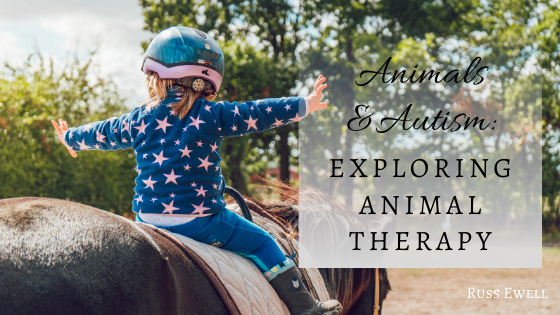Autism is a complex spectrum disorder that affects every person differently. Researchers are constantly looking into how animals can help with therapy for people with autism. When thinking about animals to use in therapy, the first thought is likely a dog. However, other animals like horses have actually been used to help people on the spectrum.
Service Dogs
There are many ways that service dogs can be of assistance to people with autism. Service dogs are helpful to track kids with autism who have a tendency to wander. Their expert scent tracking is helpful if a little one escapes their parent’s eye. Another way that service dogs help people with autism is tethering. Even simply holding the leash can provide the child with a sense of security and decrease their ability to wander. Service dogs can also help with behavior management. Kids with autism often have behavioral issues that are soothed when they feel the comfort of their service dog. Service dogs have also been shown to be helpful with repetitive behaviors which are characteristic of kids with autism. Some even point out that service dogs are great ice breakers. If someone sees a service dog, it may open up a door for conversation with a person with autism. The person with autism will feel more comfortable with their service dog and may be more likely to engage in conversation.
Equestrian Therapy
While you may not think of a horse as a service animal, they still have a place in therapy for people with autism. Research has shown that the three-dimensional movements of the horses during equestrian therapy have been helpful with motor skills, among other things, for children with disabilities. Additionally, equine therapy has also been proven to help with spasms and improve posture coordination.
Dolphin Therapy
Have you ever heard of dolphin therapy? There are many benefits to water for kids with disabilities. When led by a certified therapist, this can be a stimulating way to promote communication skills. It should be noted that drowning is a serious concern for children with autism. This means that this activity needs to be supervised at all times and led by a certified therapist. The appropriate safety equipment also must be used for the best experience.

